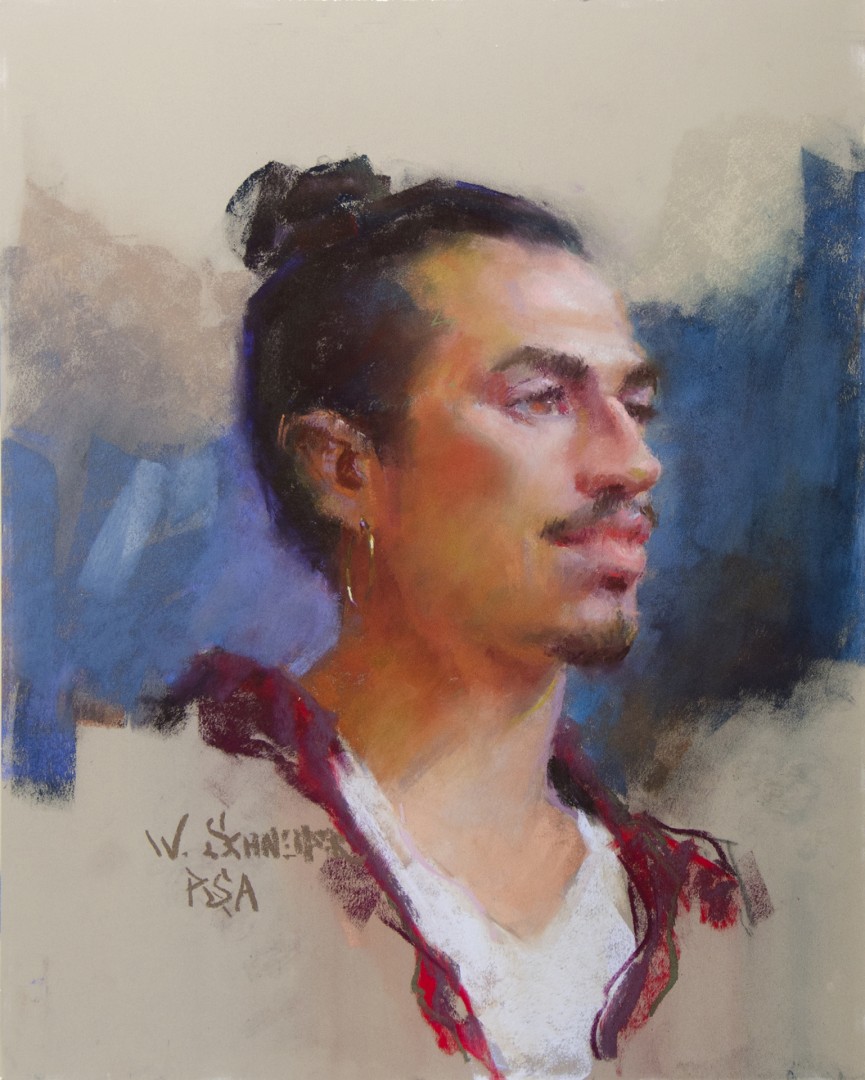
“The camera lies to us!,” says William Schneider. “There are four key elements to a representational painting: shape (drawing), value, color temperature, and edge. In a photo, three of the four are ALWAYS wrong! Values are the worst offender. The two or three darkest values turn into black, and the lightest areas get “blown out” to pure white. In a photo all edges are equally sharp … but that’s not the way we see. The center of our field of vision is sharp, but the periphery is in soft focus. As we glance around a scene we can see each edge sharply — sequentially, but not simultaneously.

“Color temperature is also distorted. We are limited by the phosphors in our computer screens, or — worse yet — the dyes in our printer’s inks. The fourth element, shape, may or may not be distorted, depending on how close we were to the subject when we took the photo. If we work exclusively from photos we become really good … at painting inaccuracies! There are a couple of other benefits to working from life. It imposes a time limit that forces us to be selective. It also forces us to ‘be here, now’; in other words, ‘mindful’ in the Zen sense.”

William Schneider takes you step-by-step through his pastel portrait painting process in “Pastel Painting Secrets.”



